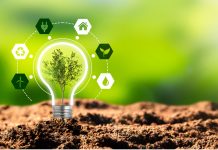
All low fruit of water has been harvested and exhausted. There is not a single river that can possibly be damned in the country to augment supply. There are no more augmentation schemes like we know to provide any more water. Simply put 2010 sees South Africa on its last dregs of supply management as we know it. The future is not rosy.
The future:
Worst hit will be the Reef. Ground water will soon be polluted with Acid Mine Water which will enter the water table and erode buildings. Rivers are being polluted with sewerage AMW, and it is not just the acid water that is so toxic to the rivers, but Cyanide, and radioactive substances including isotopes of Radon, Iridium and Uranium. The cocktail of these will make it impossible to use this water for anything whatsoever. Worse still, is that this water will reach the drinking water of the Vaal system and make this water unusable too, soon, within 18 months!
There is not one single sewerage treatment works in the whole country that is able to process all of the sewerage effluent arriving in the pipelines to their works. This means that raw, untreated effluent is flowing into every river around the country, and all over the country people are dying from drinking toxic water, in a septic state for us to drink!
Water outages have become the norm in many municipalities unable to cope with increasing demand. Outages will come to Gauteng by 2013 and Cape Town perhaps sooner.
Cape Town is going into a drought cycle, from which they will only emerge in 3 years time, and will be out of water by 2012. Though the city is way ahead in educational exposure of water matters, the city ignores rainwater harvesting and the water saving aspect of demand management as a tool to provide extra water for the City.
Places like Hartebeest Poort: this is simply an extension of a sewerage treatment works. The water is toxic and even the municipality drawing on this water admit that they are unable to treat this water for potable purposes. Worse is to follow. The AMW has reached this body of water. Rand Water is contracting to provide the diminishing water from the Vaal Dam at a staggering 200 million Rand to the area for drinking quality water.
The good news: Enter Water Rhapsody from the wings:
Water Rhapsody will reduce demand for most if not all buildings by at least 50% and in some instances by 90%. Water Rhapsody too will provide water safe to use in the house by harvesting water from roofs, and pumping under normal pressure to the whole household. Furthermore Water Rhapsody with its proven conservation systems is able to reduce water demand to as low as 80 litres per person per day. Country wide the current demand is 240 litres per person per day. Water Rhapsody does this without getting the user to change his or her lifestyle in any way. The resultant effluent from a user of the Water Rhapsody Systems of Conservation is a fall in sewerage flow of 90%. This reduction over a whole suburb would mean that any sewerage treatment works would be able to cope with the effluent volume, allowing water safe to drink running into our rivers.
Clearly Municipalities as well as Government must take notice that we have a disaster that is currently happening. It is not if, or when this might happen, IT IS HAPPENING RIGHT NOW!!!
The track record and technology for the Water Rhapsody Systems is proven without a single failure ever. The systems have been built into the biggest companies and institutions including Old Mutual in Pinelands and UCT in Cape Town.
The Government and municipalities treat water as a commodity because they sell water for profit but we must never lose sight of the fact that water is a precious resource.
Lastly, though coastal regions are in a better position that inland cities, none of these cities have enough water. The buzz words of using ground water and desalination of sea water are not sustainable. The water for instance in the TMG (Table Mountain Group) aquifer is fossil water from millions of years ago, and be warned – there is a finite amount of water in the aquifer, and the recharge is perhaps thousands of years. As for desalination of sea water – the energy cost of 4 kilowatt hours to desalinate sea water to make one kilolitre of potable water is simply not a cost effective way of providing water. Take the smallest of the large dams supplying Cape Town –Steenbras Lower Dam contains 30 million kilolitres of water which Cape Town would use up in less than 15 days. It would cost Cape Town 120 million Kilowatt hours of power generation to provide the equivalent amount of water as this dam though the desalination process of Reverse Osmosis (RO). Clearly this should not be considered as an option. Cape Town is stressed enough for power supply, and there would not be enough power generation for this option.
Water Rhapsody encourages the public to make use of their natural resources, not taking away of using more energy to try to create something out of existing resources. People must realize the effect of what we’re implementing now, on our future and those of the one’s we leave behind.
www.watersafe.co.za
Related articles by Zemanta
- ‘Tea bag’ filter delivers purified water (saaea.blogspot.com)













